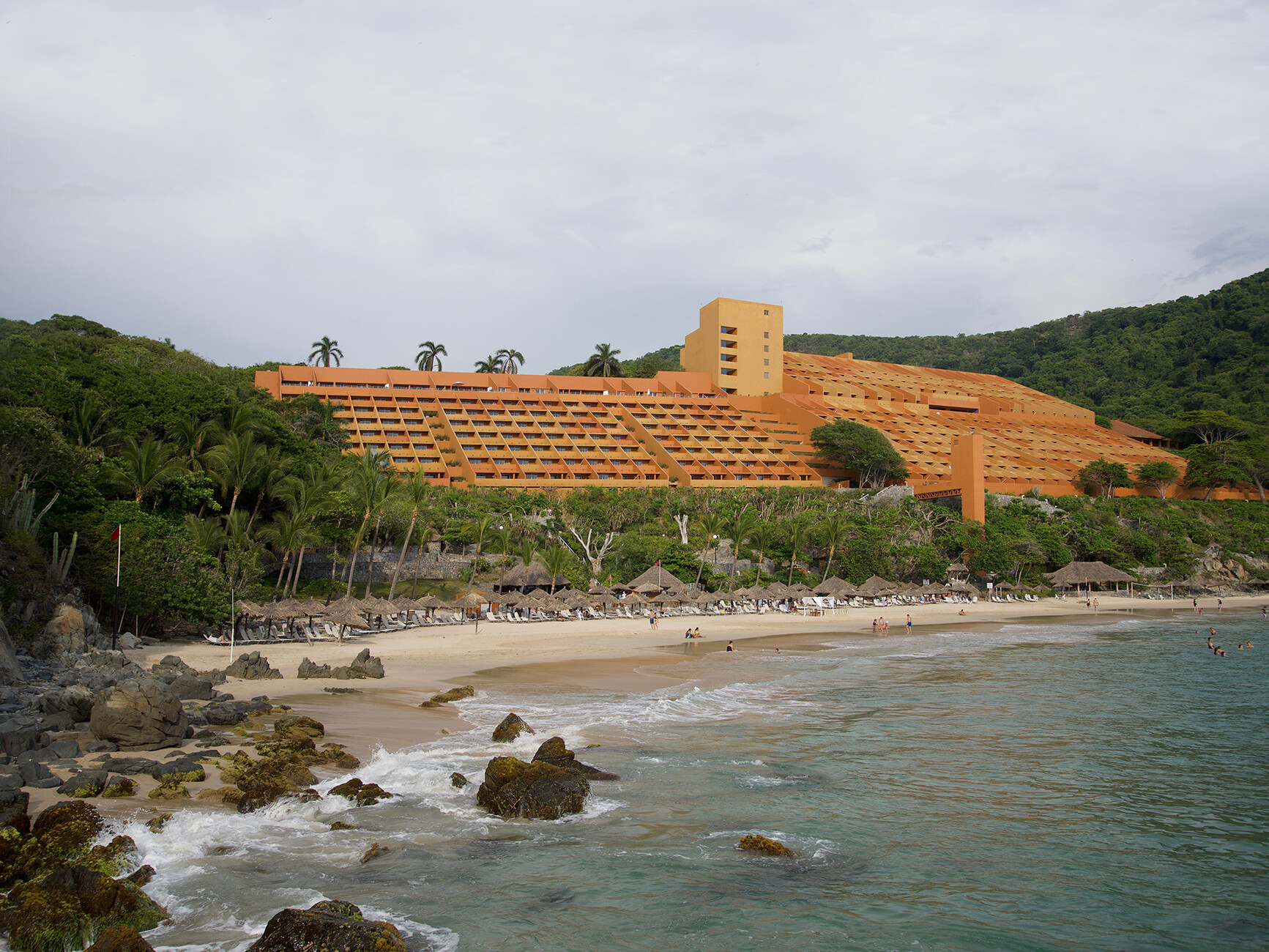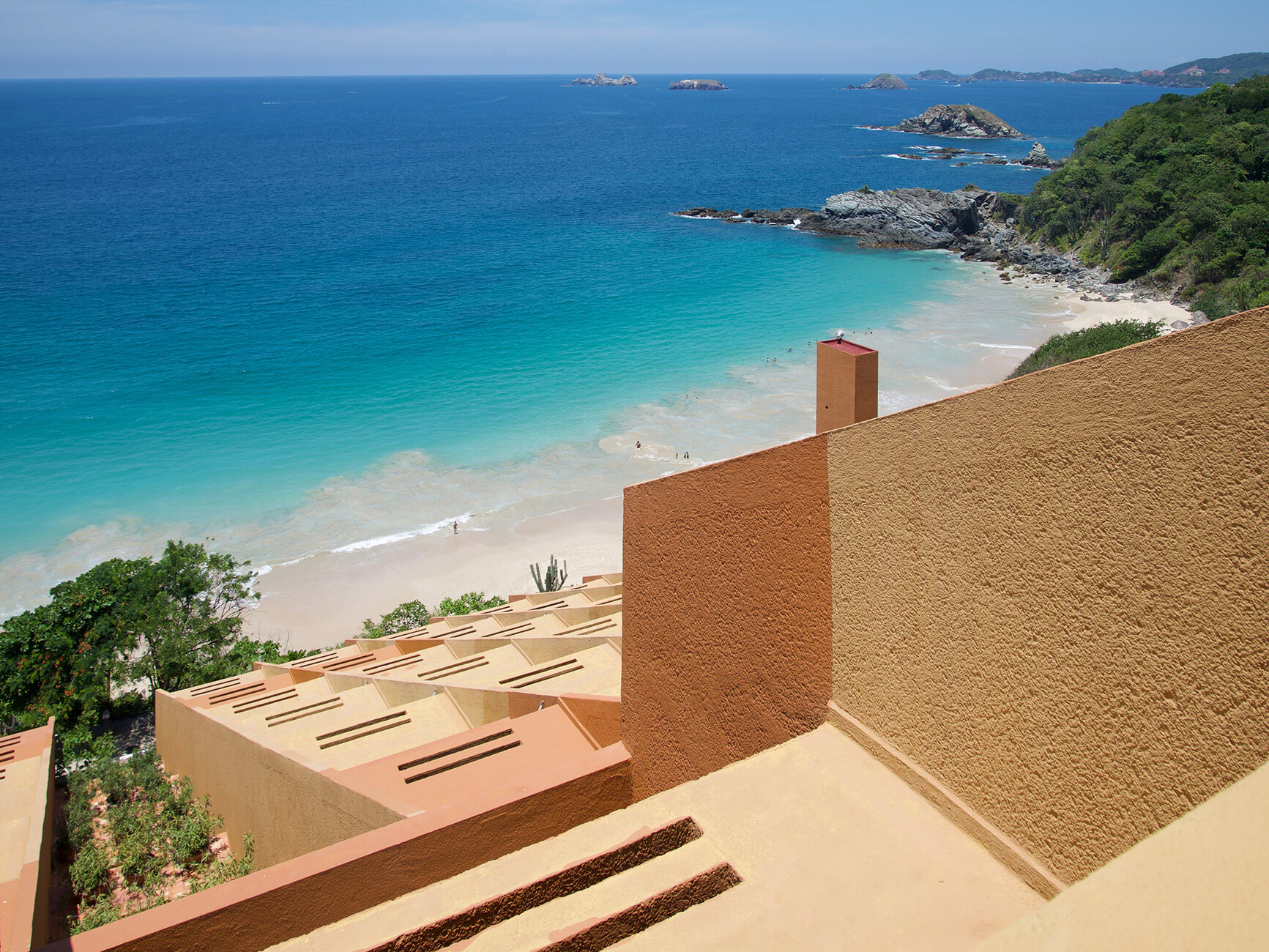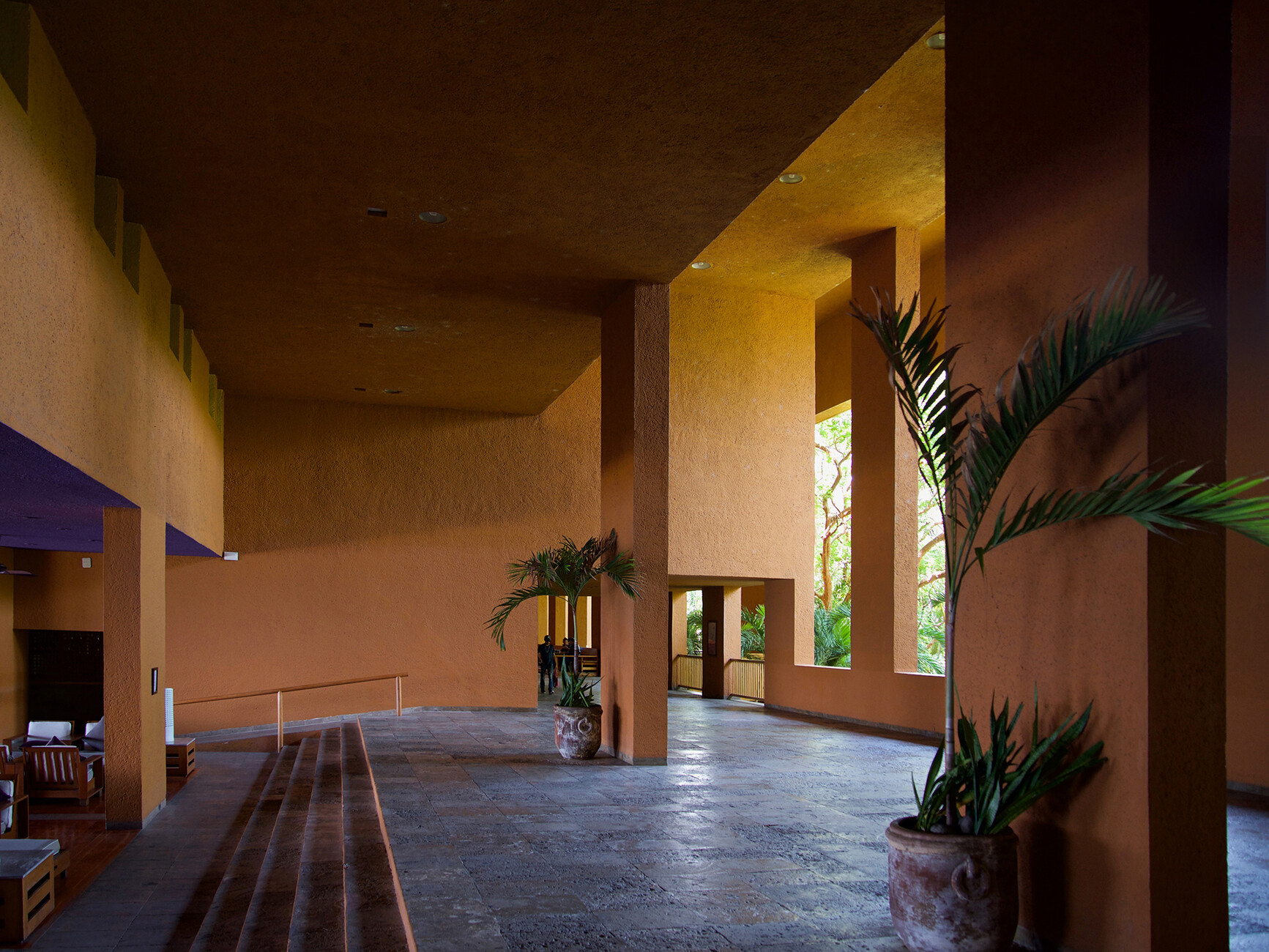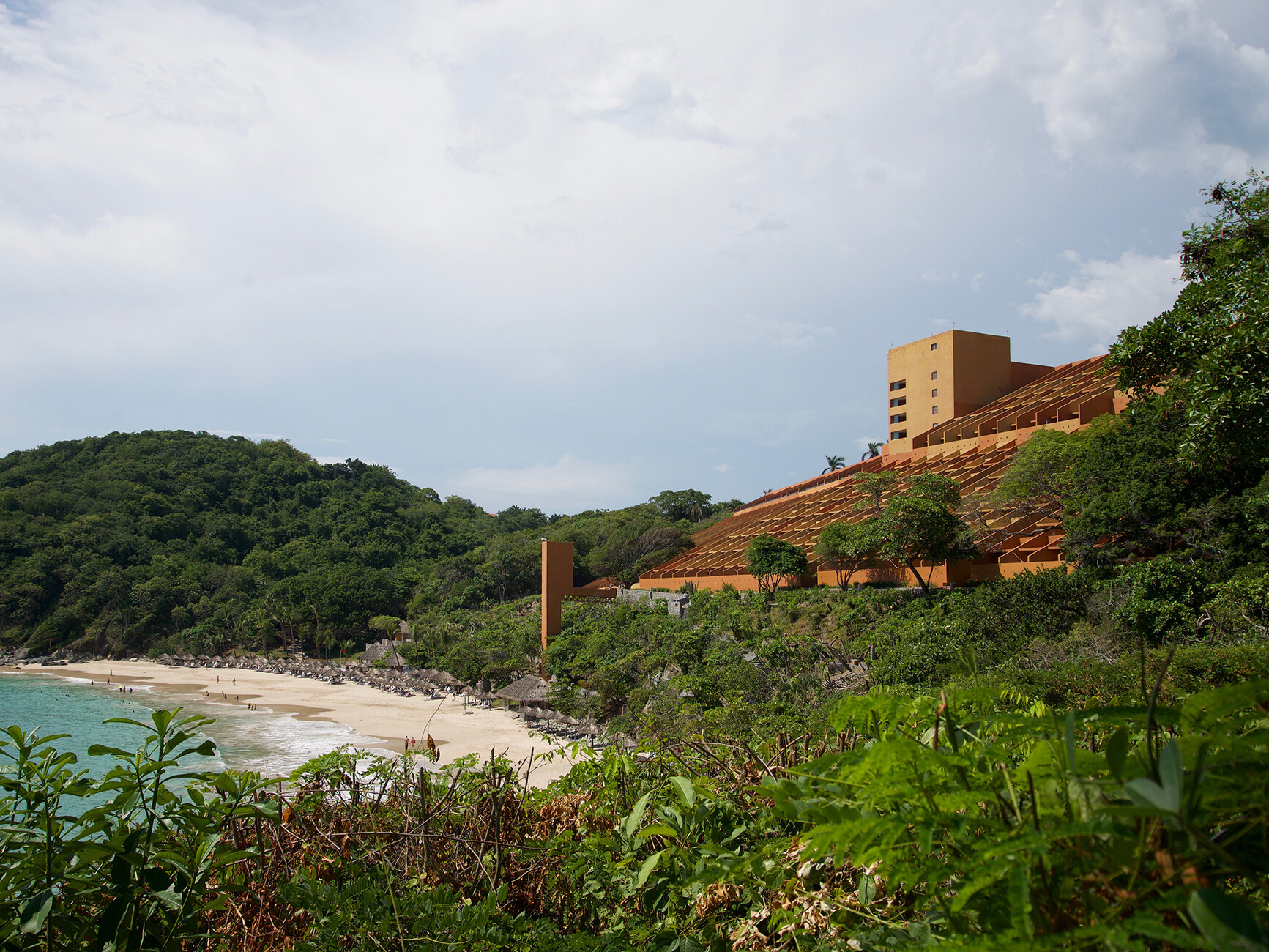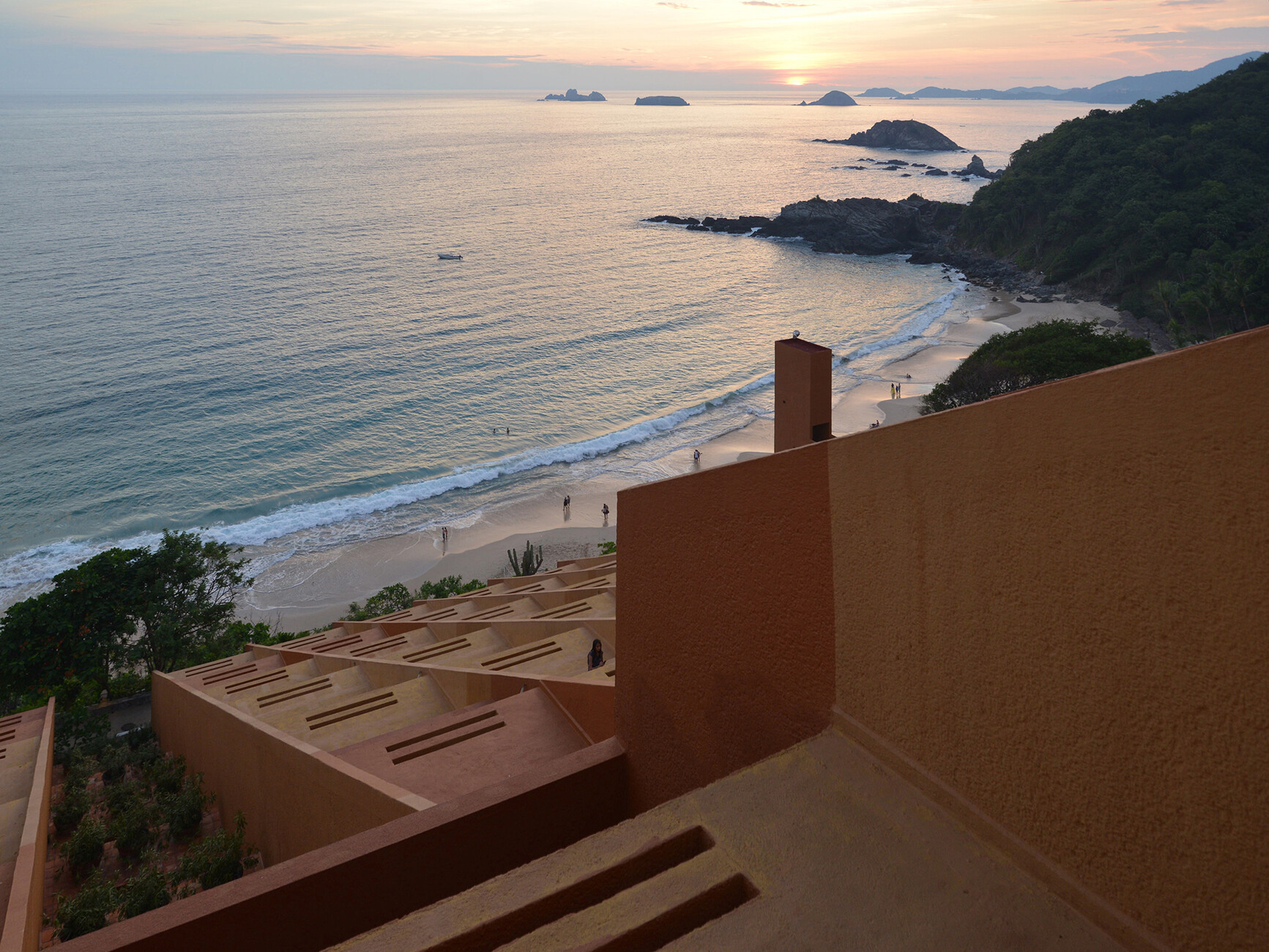Constructed landscape
Although this hotel complex boasting more than 400 rooms towers over the bay, from the beach the structure is barely visible. It is set back from the beachfront with tropical vegetation surrounding the building, which is accessed via an entrance hall of monumental proportions. The architecture here is so abstract and archaic that there are neither windows nor doors. Visitors find themselves on a plateau clad in natural stone, which opens up to a palm forest to the east and the sea to the west, with the landscape presented in framed views. In the central hall, the building appears like an enormous bridge structure, under which visitors pass and can walk directly to the edge of the building, from where there is a spectacular panorama over the water like that from an enormous ship.
All corridors, the lobby with a bar – which seems to have been designed around the sunset – and the central open restaurant all form a continuum with the surroundings. The structure of the building is designed in such a way that the sea breeze wafts through all the spaces. Only the guest rooms are glazed and have air conditioning, although here too, it’s possible to slide the floor-to-ceiling glass doors entirely into the wall so that the inner space forms one unit with the terrace. It’s particularly interesting for a hotel that the architect was also able to help design the furniture. The heavy, solid wood pieces give the rooms a specifically Mexican atmosphere, and both the geometrically clear forms of the furniture and the colors of the edifice are strongly influenced by the architect Luis Barragán. The combination of colors plays with complementary contrasts, hence the ceiling of the lobby is lilac, while the inward-facing sides of the wall openings are painted yellow. Other areas are dark blue or bright pink.
The route to the complex of terraced swimming pools located slighted away from the building is an experience in itself, taking visitors right up close to the tropical rainforest. The swimming complex itself also aligns with the theme of structural intervention in the natural topography, as the various pools are staggered on different levels.
Ricardo Legorreta’s translation of the architecture of Luis Barragán to a monumental scale nevertheless remains well balanced. While countless buildings of international mass tourism destroy that very unspoiled nature that people come to seek, this hotel demonstrates that as a “constructed landscape,” such large-scale architecture can offer guests a meditative experience shaped by the dialog with nature.

